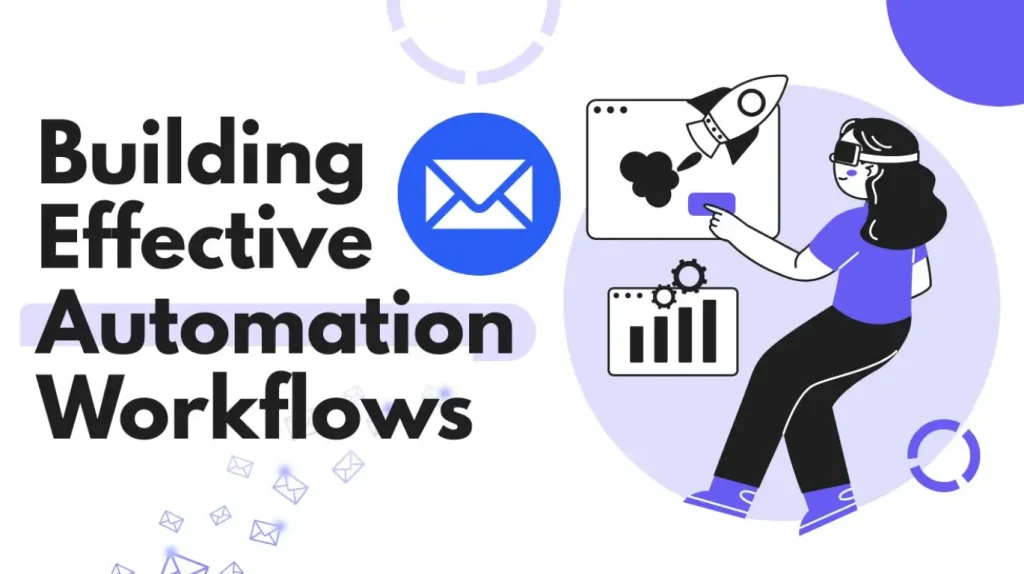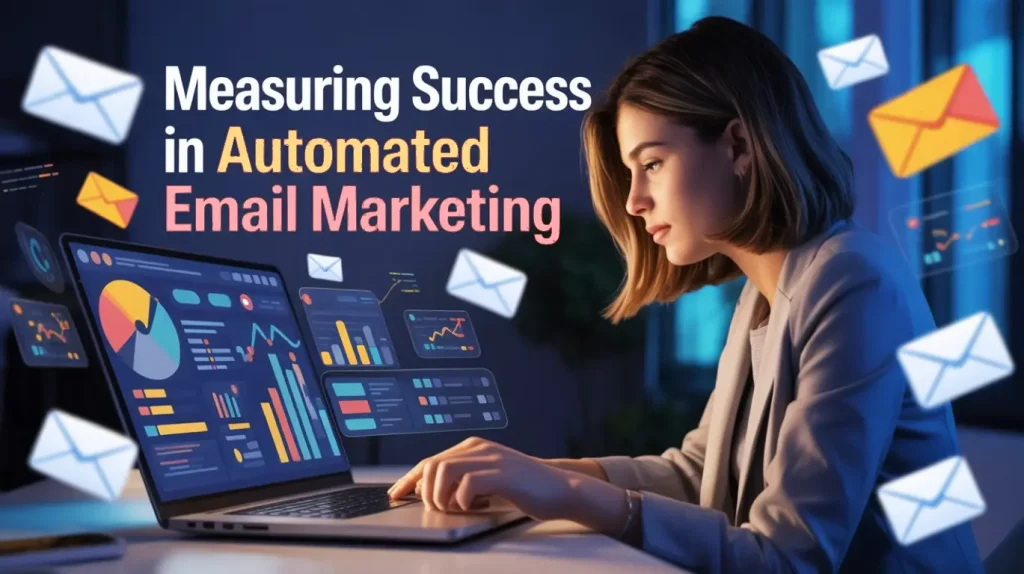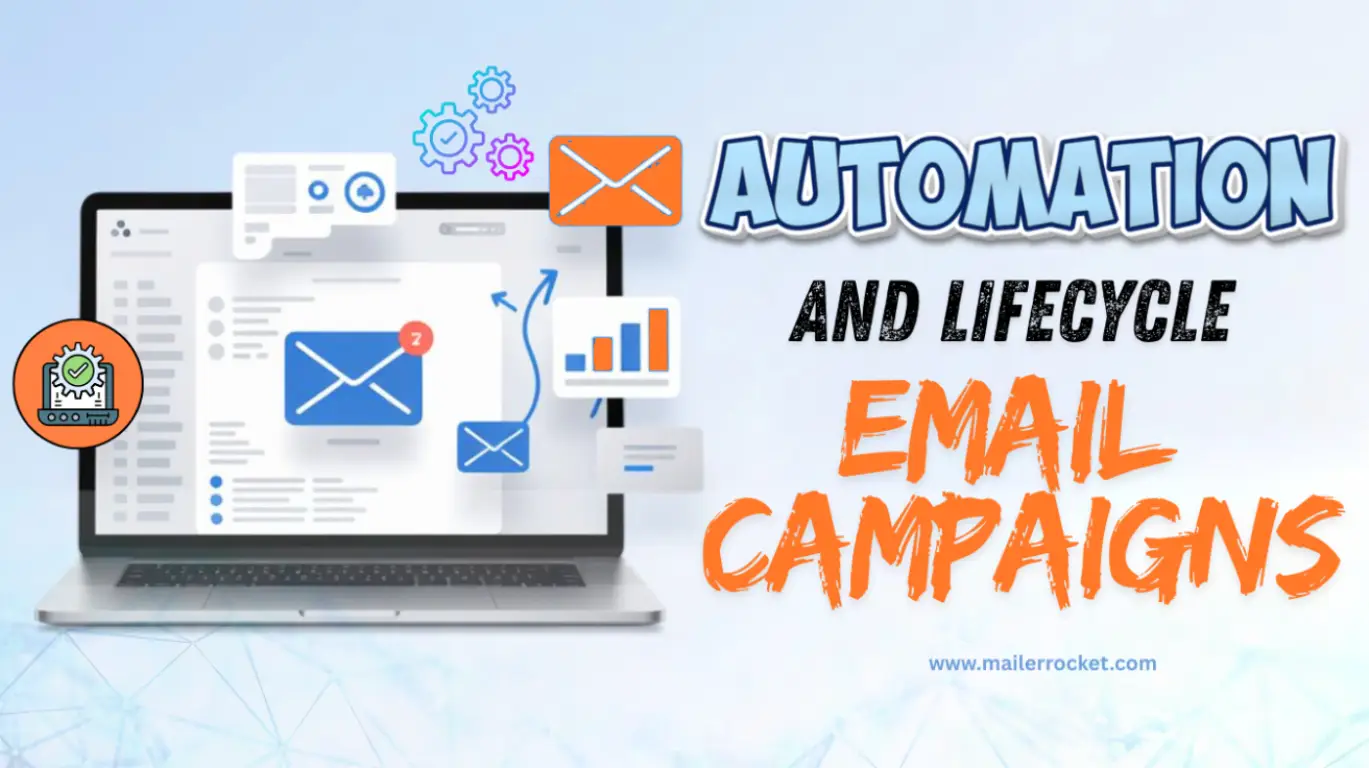You are on the cusp of transforming your email marketing strategy with the power of automation and lifecycle campaigns. By leveraging these techniques, you can create targeted and personalized campaigns that resonate with your audience, driving meaningful engagement and business growth.
Streamlining your marketing efforts becomes a reality as automation takes the helm, ensuring timely and relevant communications that nurture your customers through every stage of their journey. This not only enhances customer experience but also optimizes your resources, making your marketing strategy more efficient.
Key Takeaways
- Automation enhances the efficiency of your marketing efforts.
- Lifecycle campaigns allow for personalized customer engagement.
- Targeted communications drive business growth.
- Automation and lifecycle campaigns work together to streamline marketing.
- Personalization is key to resonating with your audience.
Transform Your Email Marketing with Automation & Lifecycle Campaigns
Harness the power of automation to deliver personalized, data-driven campaigns that engage customers at every stage of their journey — and watch your conversions soar.
Understanding Email Marketing Automation
Email marketing automation is revolutionizing the way businesses interact with their customers. By leveraging automated email marketing solutions, companies can streamline their marketing efforts, improve customer retention, and drive conversions.
What Is Email Marketing Automation?
Email marketing automation refers to the use of software to automate the sending of targeted and personalized emails to customers and potential customers. This technology enables businesses to nurture leads, enhance customer engagement, and ultimately drive sales.
Key Benefits of Automated Email Marketing
The benefits of automated email marketing are numerous. Some of the most significant advantages include:
- Increased efficiency through automated workflows
- Improved personalization through data-driven content
- Enhanced customer experience through timely and relevant communications
- Better ROI through targeted campaigns
How Automation Transforms Customer Relationships
Automation transforms customer relationships by enabling businesses to provide personalized and timely interactions. By using data and analytics, companies can create highly targeted campaigns that resonate with their audience.
| Aspect | Manual Email Marketing | Automated Email Marketing |
|---|---|---|
| Personalization | Limited by manual effort | Highly personalized using data |
| Timeliness | Delayed due to manual processing | Immediate, triggered by specific actions |
| Scalability | Difficult to scale | Easily scalable |
The Power of Lifecycle Email Campaigns
Lifecycle email campaigns represent a sophisticated approach to email marketing automation, allowing businesses to engage with customers at various stages of their journey. By understanding and implementing lifecycle campaigns effectively, marketers can significantly enhance customer interactions and drive conversions.
Defining Lifecycle Marketing
Lifecycle marketing focuses on nurturing customer relationships throughout their entire journey, from initial awareness to post-purchase support. This approach involves creating targeted email campaigns that cater to the customer’s needs at different stages, thereby fostering a more personalized and engaging experience.
Customer Journey Mapping for Email Campaigns
Customer journey mapping is a critical component of lifecycle email campaigns. It involves identifying key touchpoints in the customer’s journey and creating email content that resonates with them at each stage. By mapping the customer journey, marketers can develop a deeper understanding of their audience’s needs and preferences, enabling them to craft more effective email campaigns.
Why Lifecycle Emails Outperform Traditional Campaigns
Lifecycle emails outperform traditional campaigns due to their targeted and personalized nature. By focusing on the customer’s specific needs and behaviors, lifecycle emails can drive higher engagement and conversion rates.
Engagement Metrics Comparison
Studies have shown that lifecycle emails typically achieve higher open rates, click-through rates, and conversion rates compared to traditional email campaigns. This is because lifecycle emails are tailored to the customer’s current stage in their journey, making them more relevant and engaging.
ROI Advantages
The return on investment (ROI) for lifecycle email campaigns is often significantly higher than traditional campaigns. By leveraging behavior-triggered emails and lifecycle marketing strategies, businesses can maximize their ROI and achieve a more substantial impact on their bottom line.
Essential Types of Behavior-Triggered Emails
In the realm of email marketing, behavior-triggered emails have emerged as a crucial strategy for businesses aiming to enhance customer engagement and drive conversions. By leveraging customer behavior data, you can create highly targeted email campaigns that respond to specific actions or inactions, thereby personalizing the customer experience.
Welcome Series Emails
Welcome series emails are designed to introduce new subscribers to your brand, nurturing them through the initial stages of their customer journey. These emails can be further categorized into:
First Purchase Incentives
Offering incentives for the first purchase can significantly boost conversion rates. By providing a limited-time discount or a special offer, you encourage new customers to make a purchase, thereby initiating their journey with your brand.
Educational Onboarding Sequences
Educational onboarding sequences focus on educating new subscribers about your products or services, helping them understand how to use them effectively. This not only enhances customer satisfaction but also reduces the likelihood of early churn.
Abandoned Cart Recovery
Abandoned cart recovery emails target customers who have left items in their shopping cart without completing the purchase. By sending timely reminders, you can re-engage these customers and encourage them to finalize their purchase.
Post-Purchase Follow-ups
Post-purchase follow-up emails are crucial for building customer loyalty. By thanking customers for their purchase and soliciting feedback, you demonstrate a commitment to their satisfaction and open avenues for future sales.
Re-engagement Campaigns
Re-engagement campaigns target inactive customers, aiming to rekindle their interest in your brand. By offering personalized content or special promotions, you can motivate inactive customers to re-engage with your brand.
By incorporating these essential types of behavior-triggered emails into your email marketing strategy, you can significantly enhance customer engagement, drive conversions, and foster brand loyalty.
Email Marketing Automation, Lifecycle Campaigns, and Behavior-Triggered Emails: A Strategic Framework
A strategic framework that combines email marketing automation, lifecycle campaigns, and behavior-triggered emails can significantly enhance your marketing strategy. By integrating these elements, you can create a cohesive customer experience that drives engagement and conversions.
Integrating All Three Elements
To effectively integrate email marketing automation, lifecycle campaigns, and behavior-triggered emails, you need to align your marketing goals with customer behavior. This involves:
- Identifying key customer touchpoints
- Mapping customer journeys
- Setting up automated workflows based on customer behavior
By doing so, you can ensure that your marketing efforts are timely, relevant, and personalized.
Creating a Cohesive Customer Experience
A cohesive customer experience is crucial for building trust and loyalty. To achieve this, you should:
- Use data and analytics to understand customer behavior
- Tailor your email campaigns to meet customer needs
- Ensure consistency across all customer touchpoints
This approach will help you create a seamless customer journey that fosters long-term relationships.
Data-Driven Decision Making
Data-driven decision making is at the heart of a successful email marketing strategy. By leveraging data and analytics, you can:
- Optimize your email campaigns for better performance
- Identify areas for improvement
- Make informed decisions about future marketing efforts
This ensures that your marketing strategy is always evolving and improving.
Building Effective Automation Workflows

To leverage email marketing automation fully, businesses must focus on building effective automation workflows. This involves a strategic approach to identifying opportunities, setting up triggers, and creating sequences that drive customer engagement.
Identifying Key Automation Opportunities
The first step in building effective automation workflows is to identify key automation opportunities. This involves analyzing customer behavior, purchase history, and engagement patterns to determine the most impactful automation strategies. Email marketing automation allows businesses to capitalize on these insights, creating targeted campaigns that resonate with their audience.
- Analyze customer behavior and purchase history
- Identify patterns in customer engagement
- Determine the most impactful automation strategies
Setting Precise Triggers and Conditions
Setting precise triggers and conditions is crucial for effective automation workflows. This involves defining specific actions or events that initiate automated emails, ensuring that communications are timely and relevant. By leveraging automated email marketing solutions, businesses can create complex workflows that respond to customer behavior, driving engagement and conversions.
- Define specific triggers based on customer actions
- Set conditions for email delivery
- Monitor and adjust triggers for optimal performance
Creating Logical Workflow Sequences
Creating logical workflow sequences is essential for guiding customers through the sales funnel. This involves designing a series of automated emails that are triggered by specific customer actions, providing a cohesive and personalized experience. Email automation tools enable businesses to create these complex sequences, enhancing customer engagement and driving conversions.
Testing and Optimizing Workflows
Testing and optimizing workflows is critical for ensuring the effectiveness of email marketing automation. This involves using split testing methodologies to compare different workflow variations and identify the most effective approaches.
Split Testing Methodologies
Split testing involves dividing your audience into segments and testing different email variations to determine which performs better. This allows businesses to refine their automation workflows, improving engagement and conversion rates.
Continuous Improvement Processes
Continuous improvement processes involve regularly reviewing and refining automation workflows to ensure they remain effective and aligned with business goals. By leveraging data and insights, businesses can optimize their email marketing automation strategies, driving long-term success.
Create Meaningful Customer Connections Through Smart Email Automation
Deliver the right message at the right time with behavior-triggered, personalized emails that nurture lasting customer relationships and drive business growth.
Advanced Personalization Strategies
Personalization is no longer just about addressing customers by their first name; it’s about creating a tailored experience that resonates with their needs and preferences. Advanced personalization strategies are crucial for businesses looking to enhance their email marketing automation and lifecycle campaigns.
Dynamic Content Implementation
Dynamic content allows marketers to create emails that adapt to the recipient’s preferences, behaviors, and demographics. By leveraging dynamic content blocks, you can ensure that each subscriber receives content that is relevant to their interests.
Behavioral Segmentation Techniques
Segmenting your email list based on subscriber behavior can significantly improve the effectiveness of your campaigns. Techniques include analyzing purchase history, browse behavior, and email engagement patterns.
Personalization Beyond First Name
To truly personalize your email marketing, you need to go beyond simple personalization tactics. This includes:
- Using purchase history to recommend products
- Analyzing browse behavior to suggest relevant content
- Leveraging predictive analytics for content recommendations
Purchase History Personalization
By analyzing a customer’s purchase history, you can identify patterns and preferences that inform your email content.
Browse Behavior Personalization
Understanding how subscribers interact with your website and emails can help you tailor your content to their interests.
Predictive Content Recommendations
Using predictive analytics, you can forecast subscriber preferences and tailor your content accordingly.
| Personalization Strategy | Description | Benefits |
|---|---|---|
| Dynamic Content | Emails adapt to recipient preferences | Increased engagement, improved relevance |
| Behavioral Segmentation | Segmentation based on subscriber behavior | Targeted campaigns, higher conversion rates |
| Predictive Analytics | Forecasting subscriber preferences | Enhanced personalization, improved customer experience |
Top Email Automation Tools and Platforms
With the ever-increasing complexity of customer journeys, email automation tools have emerged as a vital component of modern marketing strategies. As businesses strive to deliver personalized and timely interactions, the right email automation platform can make all the difference.
Enterprise-Level Solutions
For large-scale enterprises, email automation tools need to be robust, scalable, and highly customizable. Here are some of the top enterprise-level solutions:
Salesforce Marketing Cloud
Salesforce Marketing Cloud offers advanced automation capabilities, including AI-driven insights and personalization. It allows businesses to create complex customer journeys and automate multi-channel campaigns.
Adobe Campaign
Adobe Campaign provides a comprehensive solution for managing customer communications across various channels. Its automation features enable businesses to deliver targeted and timely messages.
Oracle Eloqua
Oracle Eloqua is a powerful B2B marketing automation platform that offers sophisticated email automation capabilities. It helps businesses to automate lead scoring, nurturing, and conversion processes.
Mid-Market Solutions
For mid-sized businesses, email automation tools need to balance functionality with affordability. Here are some popular mid-market solutions:
Mailchimp
Mailchimp is a well-known email marketing platform that offers automation features, including abandoned cart emails and personalized customer journeys.
HubSpot
HubSpot provides an all-in-one marketing, sales, and customer service platform with robust email automation capabilities. It enables businesses to automate lead nurturing and scoring.
Klaviyo
Klaviyo is an e-commerce focused email marketing automation platform. It offers advanced segmentation and personalization features, helping businesses to drive revenue through targeted email campaigns.
Small Business Solutions
For small businesses, email automation tools need to be easy to use and affordable. Here are some top choices:
ActiveCampaign
ActiveCampaign is a user-friendly email marketing automation platform that offers advanced features like automation workflows and personalized messaging.
Drip
Drip is an e-commerce focused email marketing automation tool that helps businesses to automate lead nurturing and conversion processes.
ConvertKit
ConvertKit is a popular choice among creators and small businesses. It offers advanced automation features, including subscriber segmentation and personalized email sequences.
Measuring Success in Automated Email Marketing

Measuring the success of automated email marketing requires a deep dive into key performance indicators and attribution models. To truly understand the impact of your campaigns, you need to track the right metrics and make data-driven decisions.
Key Performance Indicators for Automation
To evaluate the effectiveness of your automated email campaigns, focus on the following key performance indicators:
-
- Open and Click-Through Rates: These metrics indicate how engaging your emails are.
Open and Click-Through Rates
Monitoring open rates helps you understand subject line effectiveness, while click-through rates reveal how compelling your content is.
-
- Conversion Metrics: Track the actions taken by recipients after clicking through.
Conversion Metrics
Conversion rates directly impact your bottom line, making them a crucial metric for campaign evaluation.
-
- Revenue Attribution: Understand how much revenue can be directly attributed to your email campaigns.
Revenue Attribution
Revenue attribution models help you assess the ROI of your email marketing efforts.
Attribution Models for Lifecycle Campaigns
Attribution models are crucial for understanding the impact of your lifecycle campaigns. By applying the right attribution model, you can accurately measure the contribution of each campaign to your overall marketing goals.
A/B Testing in Automated Sequences
A/B testing within automated email sequences allows you to optimize your campaigns for better performance. By testing different elements such as subject lines, content, and CTAs, you can refine your approach to maximize engagement and conversions.
Streamline, Personalize, and Scale with Intelligent Email Automation
Boost efficiency, maximize ROI, and deliver impactful campaigns with automation workflows designed to engage customers and optimize every interaction.
Compliance and Best Practices
As you navigate the complex landscape of email marketing, compliance with regulations and adherence to best practices become paramount. Ensuring that your email marketing strategies are both effective and compliant is crucial for maintaining a positive brand image and fostering trust with your audience.
CAN-SPAM and GDPR Considerations
Understanding and complying with regulations like CAN-SPAM and GDPR is fundamental. CAN-SPAM requires clear opt-out mechanisms and truthful header information, while GDPR mandates explicit consent for data processing. To comply, ensure that your sign-up forms are clear about what subscribers are opting into, and make it easy for users to unsubscribe.
Frequency and Timing Best Practices
Finding the right frequency and timing for your emails can significantly impact engagement. Segment your audience to tailor your sending frequency to different groups’ preferences. Use data to determine the optimal timing for your emails, considering factors like time zones and typical work hours.
Maintaining List Hygiene
Regularly cleaning your email list is essential for maintaining high engagement rates and avoiding spam filters. Remove inactive subscribers periodically and use double opt-in methods to ensure list quality. This practice not only improves your sender reputation but also ensures that you’re targeting active and interested recipients.
Preference Centers and Subscription Management
Providing subscribers with preference centers allows them to manage their email preferences, reducing the likelihood of unsubscribes. Implement granular subscription options to let users choose the types of emails they receive. This enhances user experience and helps in maintaining a healthy email list.
By adhering to these compliance and best practices guidelines, you can create email marketing campaigns that are not only effective but also respectful of your subscribers’ preferences and legal requirements.
Conclusion: The Future of Email Marketing Automation
As you’ve learned throughout this article, email marketing automation, lifecycle campaigns, and behavior-triggered emails are revolutionizing the way businesses interact with their customers. By leveraging these strategies, you can create a more personalized and engaging experience for your audience, driving long-term growth and customer loyalty.
The future of email marketing automation is bright, with advancements in AI and machine learning enabling even more sophisticated personalization and predictive analytics. As you move forward, it’s essential to stay ahead of the curve by adopting the latest trends and technologies in automated email marketing solutions.
By integrating lifecycle campaigns and behavior-triggered emails into your overall email marketing automation strategy, you’ll be able to create a cohesive customer experience that drives real results. As the email marketing landscape continues to evolve, it’s crucial to remain agile and adapt to changing customer behaviors and preferences.
Ultimately, the key to success in email marketing automation lies in your ability to balance technology with a deep understanding of your customers’ needs and preferences. By doing so, you’ll be well on your way to creating a sustainable email marketing strategy that drives business growth and customer engagement.


